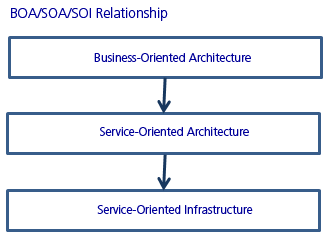Business-Oriented Architecture: SOA Refocused
Abstract
Service-oriented architecture (SOA) has provided the means to give control back to businesses. SOA is an IT solution for complex integration, and business-oriented architecture is a process that allows businesses to define their model and processes to drive IT and SOA, resulting in greater value.
SOA has matured over the years to address the large IT pain points of complex and expensive integration hurdles created by the distribution of IT system solutions across the business. It has allowed insurers to reuse similar business functionality, create standards-based interfaces, and, in more mature organizations, provide SOA governance to maximize the IT benefits of lower maintenance costs and quick project delivery. However, SOA addresses IT bottlenecks, not the business process. Working from the bottom up will not result in the most efficient and effective business processes. The time is ripe to take a business-oriented architecture (BOA) approach to focus on processes, especially in today’s customer-centric world. BOA is the perfect driver for SOA, maximizing business and IT benefits.
In a new report, Business-Oriented Architecture: SOA Refocused, Celent describes a business-focused approach for defining and driving IT. BOA is based on three tenets:
- Implementation independence
- Location independence
- Contracts
BOA allows the business to create business models and processes independent of IT implementations and removes dependencies on programming languages and location. It also places accountability back on the business through the creation of contracts around the business processes and services they may require. IT then creates solutions that mirror these business models and implements metering solutions that allow monitoring and reporting of contracts.

“SOA has matured greatly over the last 10 years, but it will never allow businesses to focus on business process efficiencies and effectiveness because it is rooted in IT. However, SOA has provided the bridge to allow insurers to take back control and accountability for business processes and drive IT,” says Ben Moreland, Senior Analyst with Celent’s Insurance group and coauthor of the report. “This is exactly what IT wants.”
This report describes a BOA approach and provides recommendations for implementing BOA.

